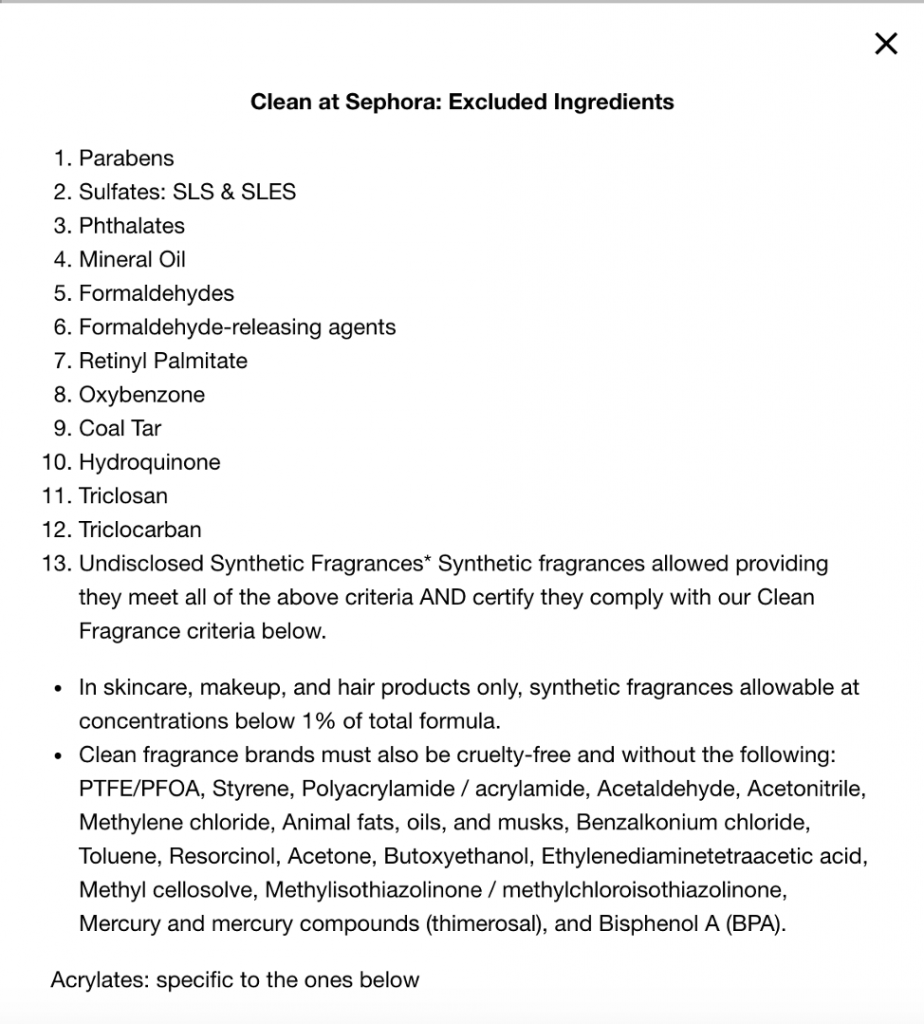Beauty is more than skin deep: The forgotten issue of sustainability
In this post, we cover the topic of sustainability within the beauty industry.

When it comes to sustainability, most fashion brands are attempting to make moves in the right direction. Levi’s has made incredible strides to remove water from its finishing process whenever possible. The results have been reduced water usage by 96%.
Brands like Alternate Apparel, H&M, and Amour Vet either opt for following an organic manufacturing process, use organic materials, or a mix of both.
ThredUP has a business model based on recycling second-hand clothing. H&M also encourages consumers to recycle by offering a discount for recycled clothing. And, retailers like Columbia, Athleta, and Manduka make products out of recycled materials.
And, popular cosmetic brand, Loreal, commits to innovating until 100% of their products have either an environmental or social benefit.
Since people around the world are becoming more and more conscious of the environment, and since the majority of consumers are just as interested in sustainable and ethically sourced material as they are in high fashion, it makes sense why brands are rising to the occasion.
But, are retailers leaving anything out of the sustainability equation and is there room to grow?
A recent Vogue article and award-winning documentary and new Toxic Beauty documentary bring up an interesting question. Are brands responsible for chemicals they are using in their products? To delve a bit deeper, it’s important to ask whether or not brands responsible for becoming more transparent and accountable for business practices, and does this play a part in sustainability?
What is the current state of affairs regarding the use of chemicals in products?
In Toxic Beauty, Ellis talks about how cosmetic legislation in the U.S. hasn’t been updated since 1938. That means the current safety data is 82 years old, and harmful chemicals like parabens, phthalates, and heavy metals, for example, are a free for all for brands, regardless of their impacts on health.
While there are a plethora of unregulated chemicals in personal-care products in the United States, it doesn’t mean that all brands simply don’t care about what goes in their products.
In fact, brands have come a long way in the past century, especially in recent years, with regard to what they will put in their cosmetic products and what they will use for manufacturing.
Thankfully, long gone are the days of products like Lysol-based hygienic products (yikes), and Le Fevre’s Arsenic Wafers for a whiter complexion (double yikes).
What are brands doing now to reduce the use of harmful chemicals?
Brands like Juice Beauty don’t need any incentives to motivate their positive sourcing practices. Instead of making products full of chemicals, they are turning to organic alternatives. Yes, they ensure that all ingredients meet USDA organic regulations, and they have their own standards to ensure safe products.
The Clean Beauty Collective is a fragrance producer that focuses on using non-harmful, cruelty-free, and non-toxic products. They also make their products from sustainable ingredients and use eco-friendly manufacturing processes.
Clean at Sephora is another initiative that informs consumers when a product meets specific safety standards. Not all products at Sephora are “clean,” but when a product meets those safety standards, Sephora makes a big deal out of it by including its recognizable green Clean at Sephora icon.

Here is a quick overview of Sephora’s clean
policy followed by some of the ingredients the clean policy bans.


Even if most ingredients aren’t reviewed by a government agency before they go to market, it doesn’t mean cosmetic, fragrance, and fashion brands aren’t doing their own work to foster health and safety.
But, is it enough? Should chemicals be more heavily regulated like in Europe?
But, since many products do still contain a heavy amount of chemicals, the following questions remain:
- Are brands doing enough to create healthy products and ban the use of harmful chemicals?
- Do brands have a social responsibility to promote health, especially over beauty (this question is
explored in Toxic Beauty)? - Should chemicals in products be more heavily regulated?
As people become more and more invested in sustainability, it will be interesting to see how this extends into the use of chemicals in products and for manufacturing. Will the United States follow European trends and ban more chemicals, or will they continue to leave it up to brands? What do you think should happen?
For more information about sustainable retailing practices and for a tool to help you manage your inventory, visit nuORDER today.
Related articles
Get on the list
Wholesale tips and industry news you can’t miss, delivered weekly
